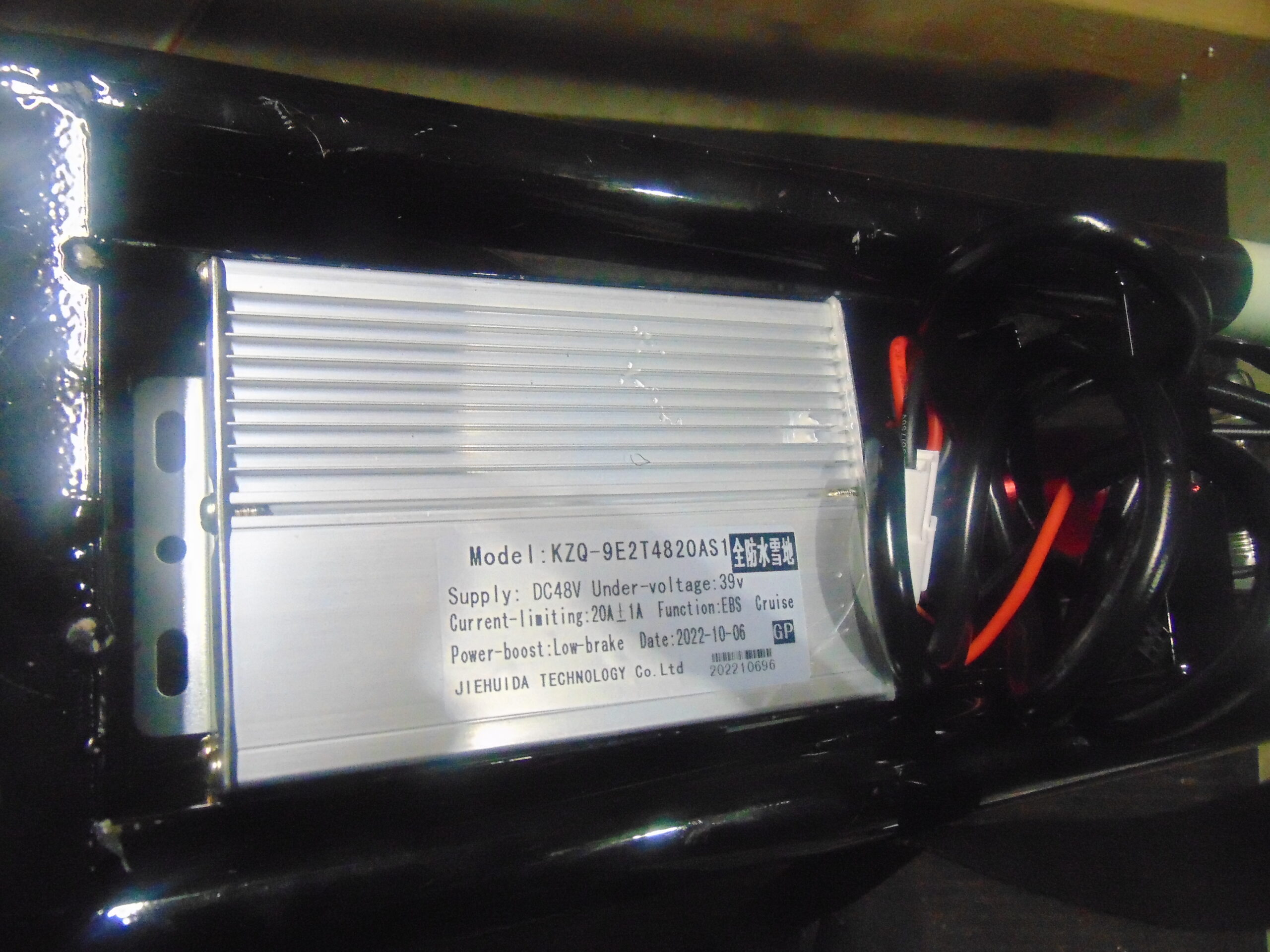An e-bike controller is an important part of an electric bike system, converting battery power into mechanical power and regulating speed and torque. It also connects all electrical components together.
The controller takes the signal from your throttle or pedal sensor and uses it to control how much electricity flows into the motor(s). The more throttle or pedal pressure you apply, the more power goes to the motor(s) which results in faster acceleration and higher speeds.
In addition to controlling how much electricity flows through each phase of a three-phase AC induction motor (see below), controllers also regulate torque output by varying voltage waveform shapes according to load requirements at any given time–for example when climbing hills versus riding on flat ground at high speeds where there are no hills involved!
Types of E-Bike Controllers
You’ll find two types of e-bike controllers: brushed DC motor controllers, and brushless DC motor controllers. The former are the most common type of controller for electric bikes and are usually found in cheaper models. They’re also simpler to use because they don’t require any additional components besides your motor, battery, and display.
Brushless DC (BLDC) motors are more expensive but offer better performance than brushed DC motors because they have fewer moving parts–therefore less friction–and can be used with different voltages without needing to change any settings on your controller or battery pack like you would with a standard BLDC system.
Brushed DC Motor Controllers
Brushed DC motor controllers are the most common type of controller. They come with permanent magnets and a collector, which is why they have a simpler design than brushless DC motor controllers. The main components of this type of controller are:
The stator (the stationary part)
The rotor (the moving part)
A flywheel that helps reduce vibration in the system
Brushless DC Motor Controllers
Brushless DC motor controllers are the most popular type of e-bike controller. They feature permanent magnets and offer a higher efficiency than brushed DC motors, which use electromagnets.
Brushless DC controllers can be either single or dual phase, depending on how many phases they have.
A single-phase controller can only power one phase at a time; it’s not possible for you to run two motors off one controller unless they’re both single-phase (in which case you’d need two separate controllers).
Dual-phase controllers allow you to power two separate phases at once–so if your bike has three motors on it (one front wheel motor and two rear wheel ones), then using a dual-phase controller will allow them all to run together without interfering with each other’s operation or speed control settings
The voltage of your controller should match the battery voltage and should not exceed it.
If you’re using a 48V system, you’ll want to make sure your controller can handle up to that amount of power. For example, if you have a 36V battery pack, then a 48V controller would be fine for it because it’s within its limits (i.e., 36 > 38). However, if your battery pack has 72 volts or more in it (like many high-end lithium ion packs), then stick with something closer to that range–say 60V–to avoid damaging anything internally by trying to push too much current through it at once.
Wattage
Wattage is a measurement of the power output of your motor. It’s important to match the wattage of your controller with the wattage of your motor, and it should never exceed that number. If you have a high-powered motor but don’t have enough watts from your controller, it won’t be able to reach its full potential.
You can find out what wattage your bike needs by looking at its manual or asking someone who works in a bike shop or knows about these things (like an electrician).
Current
The current should match the motor current and should not exceed it.
If you’re using a controller with an integrated BMS, then this is taken care of for you. The BMS will limit the amount of current going into your battery pack based on its capacity and voltage, so there’s no need to worry about it. Just make sure that the controller can handle enough amps for your particular setup (see below).
If you’re using an external BMS or no BMS at all, then it’s up to you to ensure that there aren’t any shorts between wires leading out from your controller–and if there are shorts somewhere along those paths, they’ll blow up in spectacular fashion!
The most common types of controllers
Mechanical – These use gears and cogs to turn electrical energy into mechanical energy that can be used by your bike’s drivetrain (the chain and sprockets). They’re generally less expensive than other types of controllers, but they’re also heavier and less efficient at converting electricity into power for your bike’s wheels.
Electronic – These use microprocessors and transistors instead of gears or cogs; this makes them lighter than mechanical controllers while still being strong enough for most people’s needs
